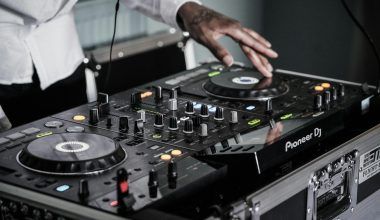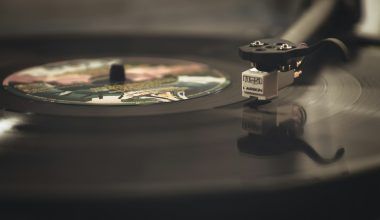Audio mastering is often referred to as the final step in music production. It’s the process of refining your tracks to ensure they sound their best on all playback systems. Whether you’re a budding artist or a seasoned producer, mastering is the key to creating music that stands out.
Think of it as giving your music that final polish before presenting it to the world. It’s not about changing the essence of your track; it’s about enhancing what’s already there. With the right tools and techniques, mastering can take your music from good to truly professional.
Why is Audio Mastering Important?
Imagine baking a cake. Mixing and baking are like recording and mixing music. But the decoration? That’s mastering. Without it, the cake may taste good but won’t look as appealing. Similarly, unmastered music might sound decent in the studio but lack the punch and clarity needed for different platforms.
Audio mastering ensures consistency across all playback systems—whether it’s headphones, car speakers, or a high-end sound system. It balances frequencies, enhances dynamics, and optimizes your track’s loudness. Mastering is the final touch that bridges the gap between amateur and professional music.
The Basics of Audio Mastering
If you’re new to audio mastering, don’t worry. It’s not as intimidating as it sounds. At its core, mastering involves:
- Balancing Levels: Ensuring all elements of the track are at the right volume.
- Frequency Correction: Tweaking highs, mids, and lows for a clean, balanced sound.
- Dynamic Range Optimization: Controlling the difference between the softest and loudest parts of the track.
- Stereo Enhancement: Creating depth and width for a fuller sound.
- Final Output Preparation: Formatting the track for streaming, CDs, or other platforms.
These steps may sound technical, but with a little practice, anyone can grasp the basics.
Tools You Need for Audio Mastering
You don’t need a fancy studio to master your tracks, but having the right tools can make a big difference. Here’s what you’ll need:
- A Reliable Digital Audio Workstation (DAW): Software like Ableton, Logic Pro, or Pro Tools is essential.
- Mastering Plugins: Tools like EQ, compressors, limiters, and stereo enhancers are your best friends.
- Studio Monitors or Headphones: Accurate playback equipment helps you catch subtle details.
- An Acoustically Treated Space: While not mandatory, a good listening environment can improve your results.
Each tool plays a role in shaping the final sound, so it’s worth investing time to learn how they work.
Step-by-Step Guide to Audio Mastering
Step 1: Prep Your Mix
Before jumping into mastering, make sure your mix is solid. A good mix is the foundation of great mastering. Check for balance, clarity, and any unwanted noises. Remember, mastering can’t fix a bad mix, so get it as clean as possible.
Step 2: Set Up Your Session
Load your track into your DAW and set up your mastering chain. Start with an EQ to shape the sound, followed by a compressor to control dynamics. Add a limiter at the end to set the final loudness level.
Step 3: Equalization (EQ)
EQ is one of the most powerful tools in mastering. Use it to correct frequency imbalances. For instance, if your track sounds too muddy, reduce the low frequencies slightly. If it feels dull, boost the highs gently.
Step 4: Compression
Compression helps control the dynamic range of your track. It ensures that the loud parts aren’t too overwhelming and the soft parts aren’t too quiet. Use a light touch—over-compression can make your track sound lifeless.
Step 5: Stereo Imaging
A wide stereo field can make your track sound more immersive. Use stereo enhancement tools to spread out the sound, but keep the bass frequencies centered for a solid foundation.
Step 6: Limiting
Limiting is the final step in mastering. It sets the maximum loudness of your track. Aim for a loud but clean sound—distortion can ruin the listening experience.
Common Audio Mastering Mistakes to Avoid
Even experienced producers make mistakes during mastering. Here are a few to watch out for:
- Over-Processing: Too much EQ or compression can rob your track of its natural feel.
- Ignoring Reference Tracks: Compare your track to similar songs to ensure it stands up.
- Relying Too Much on Visuals: Trust your ears more than your eyes.
Learning from these mistakes can save you time and frustration.
Mastering for Different Platforms
Every platform has its own standards for audio quality. For example, Spotify normalizes tracks to a specific loudness level, while YouTube has different requirements. Tailoring your master to these platforms can make a big difference in how your music is received.
DIY Mastering vs. Professional Mastering
Should you master your tracks yourself or hire a professional? Both options have their pros and cons. DIY mastering is cost-effective and gives you complete control, but it requires time and practice. Professional mastering ensures top-notch quality but comes at a price.
Tips for Better Audio Mastering
- Take Breaks: Fresh ears catch details you might miss.
- Use Reference Tracks: Compare your work to professionally mastered songs.
- Keep Learning: Technology and trends in audio mastering are always evolving.
Conclusion
Audio mastering is both an art and a science. With patience, practice, and the right tools, anyone can learn to master tracks like a pro. Whether you’re perfecting your own music or helping others bring their creations to life, mastering is a skill worth honing.
Now it’s your turn. Grab your favorite track, open your DAW, and start experimenting with mastering. The world is waiting to hear your music in its best form!
For further reading, explore these related articles:
- Dive Into the Best Movie Songs of All Time: A Musical Journey
- The Journey of Justin Bieber’s Most Famous Song
For additional resources on music marketing and distribution, visit DMT Records Pvt. Ltd..






